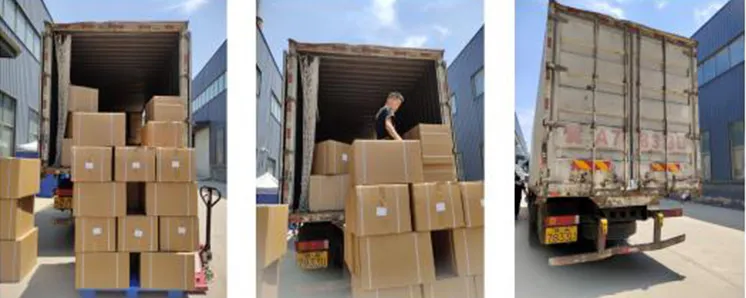
-
 Afrikaans
Afrikaans -
 Albanian
Albanian -
 Amharic
Amharic -
 Arabic
Arabic -
 Armenian
Armenian -
 Azerbaijani
Azerbaijani -
 Basque
Basque -
 Belarusian
Belarusian -
 Bengali
Bengali -
 Bosnian
Bosnian -
 Bulgarian
Bulgarian -
 Catalan
Catalan -
 Cebuano
Cebuano -
 Corsican
Corsican -
 Croatian
Croatian -
 Czech
Czech -
 Danish
Danish -
 Dutch
Dutch -
 English
English -
 Esperanto
Esperanto -
 Estonian
Estonian -
 Finnish
Finnish -
 French
French -
 Frisian
Frisian -
 Galician
Galician -
 Georgian
Georgian -
 German
German -
 Greek
Greek -
 Gujarati
Gujarati -
 Haitian Creole
Haitian Creole -
 hausa
hausa -
 hawaiian
hawaiian -
 Hebrew
Hebrew -
 Hindi
Hindi -
 Miao
Miao -
 Hungarian
Hungarian -
 Icelandic
Icelandic -
 igbo
igbo -
 Indonesian
Indonesian -
 irish
irish -
 Italian
Italian -
 Japanese
Japanese -
 Javanese
Javanese -
 Kannada
Kannada -
 kazakh
kazakh -
 Khmer
Khmer -
 Rwandese
Rwandese -
 Korean
Korean -
 Kurdish
Kurdish -
 Kyrgyz
Kyrgyz -
 Lao
Lao -
 Latin
Latin -
 Latvian
Latvian -
 Lithuanian
Lithuanian -
 Luxembourgish
Luxembourgish -
 Macedonian
Macedonian -
 Malgashi
Malgashi -
 Malay
Malay -
 Malayalam
Malayalam -
 Maltese
Maltese -
 Maori
Maori -
 Marathi
Marathi -
 Mongolian
Mongolian -
 Myanmar
Myanmar -
 Nepali
Nepali -
 Norwegian
Norwegian -
 Norwegian
Norwegian -
 Occitan
Occitan -
 Pashto
Pashto -
 Persian
Persian -
 Polish
Polish -
 Portuguese
Portuguese -
 Punjabi
Punjabi -
 Romanian
Romanian -
 Russian
Russian -
 Samoan
Samoan -
 Scottish Gaelic
Scottish Gaelic -
 Serbian
Serbian -
 Sesotho
Sesotho -
 Shona
Shona -
 Sindhi
Sindhi -
 Sinhala
Sinhala -
 Slovak
Slovak -
 Slovenian
Slovenian -
 Somali
Somali -
 Spanish
Spanish -
 Sundanese
Sundanese -
 Swahili
Swahili -
 Swedish
Swedish -
 Tagalog
Tagalog -
 Tajik
Tajik -
 Tamil
Tamil -
 Tatar
Tatar -
 Telugu
Telugu -
 Thai
Thai -
 Turkish
Turkish -
 Turkmen
Turkmen -
 Ukrainian
Ukrainian -
 Urdu
Urdu -
 Uighur
Uighur -
 Uzbek
Uzbek -
 Vietnamese
Vietnamese -
 Welsh
Welsh -
 Bantu
Bantu -
 Yiddish
Yiddish -
 Yoruba
Yoruba -
 Zulu
Zulu
car upper control arm
Understanding the Car Upper Control Arm An Essential Component for Vehicle Handling
The upper control arm is a critical component of a vehicle's suspension system. It plays a vital role in ensuring that your car handles well, maintains stability, and provides a comfortable ride. Understanding the function and importance of the upper control arm can help car owners and enthusiasts appreciate its role and recognize potential issues.
What is the Upper Control Arm?
The upper control arm is part of the double wishbone suspension system, commonly found in modern vehicles. This component connects the vehicle's chassis to the wheel assembly, allowing for controlled movement of the wheel as the vehicle navigates various terrains. Typically constructed from steel or aluminum for strength and durability, the upper control arm is designed to withstand various forces while ensuring optimal wheel alignment.
Functionality of the Upper Control Arm
The primary function of the upper control arm is to manage the up-and-down motion of the wheel while maintaining proper alignment. It allows the wheel to pivot as the suspension compresses and rebounds over bumps and dips in the road. This pivoting action is essential for maintaining tire contact with the ground, which ensures effective braking and handling.
Moreover, the upper control arm helps to control camber and caster angles, which are crucial for tire wear and vehicle stability. Proper camber allows the tire to contact the road evenly, while the caster angle affects steering responsiveness and straight-line stability. Any misalignment in these angles can lead to uneven tire wear and compromised handling.
Signs of a Faulty Upper Control Arm
As with any component, the upper control arm is subject to wear and tear. Recognizing the signs of a failing upper control arm is essential for maintaining your vehicle's safety and performance. Common symptoms include
car upper control arm

1. Clunking Noises Unusual sounds when driving over bumps may indicate that the upper control arm bushings or joints are worn out. 2. Poor Handling If the vehicle feels loose or unstable during turns, it may be due to a compromised upper control arm affecting alignment.
3. Uneven Tire Wear Inspect your tires for irregular wear patterns, which can indicate alignment issues caused by a faulty upper control arm.
4. Vibration Excessive vibration felt through the steering wheel can also point to issues with the control arm or suspension components.
Maintenance and Replacement
Regular inspection of the suspension system, including the upper control arms, is crucial for vehicle maintenance. Mechanics typically recommend checking these components during routine service intervals, particularly when new tires are installed or when unusual noises are detected.
If the upper control arm is found to be defective, it should be replaced promptly to avoid further damage to the suspension system and ensure the vehicle remains safe to drive. Replacement generally involves removing the old control arm, inspecting adjoining components, and installing a new part, which can be done by a skilled mechanic.
Conclusion
The upper control arm is an essential component of your vehicle's suspension system, contributing significantly to handling, safety, and comfort. Understanding its function and monitoring for signs of wear can help maintain your car's performance and extend its lifespan. Regular checks and timely replacements when necessary can ensure that you enjoy a smooth and safe driving experience. Remember, when it comes to vehicle maintenance, knowledge is key, and staying informed can save you money and headaches down the road.







